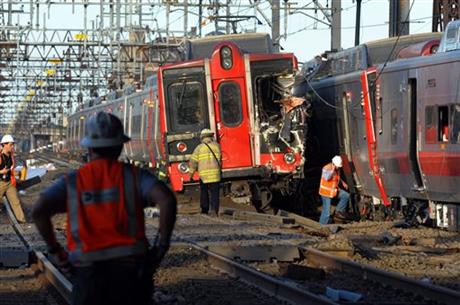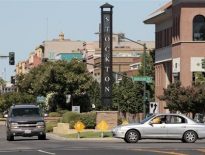NEW YORK (AP) — The nation’s second-busiest commuter railroad has had a rocky ride this year as a collision, a freight-train derailment and now a power problem disrupted the Metro-North Railroad, spurring commuters and officials to paint it as trouble-plagued.

But Metro-North boasts among the highest on-time arrival rates — lately about 96 percent — among the country’s seven busiest commuter rail lines, statistics from each show.
Tell that to the thousands of people packing highways and shuttle buses — or just staying home this week and perhaps longer — after a high-voltage feeder line failed, hobbling part of Metro-North’s line between New York City and Connecticut.
“It’s ridiculous that they keep raising our rates, but the service keeps going down and down,” publishing worker Moe Ferrara said while trying to get home Thursday to New Rochelle, N.Y., one of the stations where power was out. She pays $222 a month after a March fare increase, the latest in recent years.
The outage is just the latest problem: A Metro-North train jumped its tracks and was hit by an oncoming train in May, injuring more than 70 people, and a freight train full of garbage derailed while using a Metro-North line in July.
Metro-North representatives are frank about the railroad’s rough patch though quick to note its overall performance.
“This has been a horrible year,” said Marjorie Anders, a spokeswoman for the railroad’s operator, the Metropolitan Transportation Authority. “But, honestly, we’re still providing excellent service most of the time.”
Utility Consolidated Edison is working to see whether local residential power could be stepped up to get juice to at least some electric trains through the 8-mile stretch of the New Haven line where the high-voltage line stopped working Wednesday — while a second power line was out of service for an upgrade. It’s not yet clear what caused the failure.
To Connecticut officials, Metro-North’s recent disruptions aren’t just travel headaches but economic threats.
“The state’s health is dependent on the rail health,” Bridgeport Mayor William Finch said Friday.
Metro-North carries about 281,000 riders a day on lines in New York and Connecticut — and has done it on-time about 96 percent of the time so far in 2013, according to MTA figures. The MTA and many other commuter rail operators define a train as on-time if it’s within six minutes of schedule; some use five minutes.
The busiest U.S. commuter railway — the MTA’s Long Island Rail Road — has a roughly 94 percent on-time performance rate this year. The next two biggest commuter railroads — New Jersey Transit and the Chicago-area Metra network — are at about 95 percent, and the Philadelphia region’s SEPTA system is around 93 percent.
The Boston area’s Massachusetts Bay Transportation Authority is logging a 96 percent on-time rate. The San Francisco Bay Area’s Caltrain was around 91 percent for the fiscal year that ended in July.
(The PATH system between New York and New Jersey, more akin to a subway than a commuter railroad, has a roughly 98 percent on-time rate.)
On-time performance doesn’t necessarily mean riders are happy, though. Track improvements added as much as 10 minutes to New Haven line schedules this summer and commuters have long complained of high fares and crowded trains. Other problems have also engendered ill will, including a July 2011 episode in which passengers were stuck on a stifling, disabled train without air conditioning.
Metro-North had only about an 81 percent on-time rate when the MTA created it by taking over a struggling rail system in 1983. Metro-North now carries twice as many passengers, Anders said.
Fares cover about 60 percent of the cost of running the railroad. New York and Connecticut taxpayers split remaining costs for the New Haven line, and the two states have squabbled for years over the costs of a railway that dates to the 19th century and also carries Amtrak and freight trains.
In a major upgrade, new cars — which may have saved lives in the May crash, officials said — now make up more than half the New Haven Line trains, and more are on the way.
Metro-North’s electrical woes should prompt plans to provide backup lines in the future, said William Henderson, the executive director of the MTA’s Permanent Citizens Advisory Committee. But overall, “it’s a very good commuter railroad,” he said.
___
Associated Press writers Dave Collins, Michael Melia and Stephen Singer in Hartford, Conn., contributed to this report.





